Implementing CFD analysis in-house for mission-critical facilities.
Optimizing data center cooling strategies for low energy, reduced cost, and sustainability criteria.
Brought simulation services in-house.
DMG reports a 35% saving on labor costs per project, significantly reducing both time and financial expenditure compared to outsourcing.
ASHRAE code-compliant data center cooling.
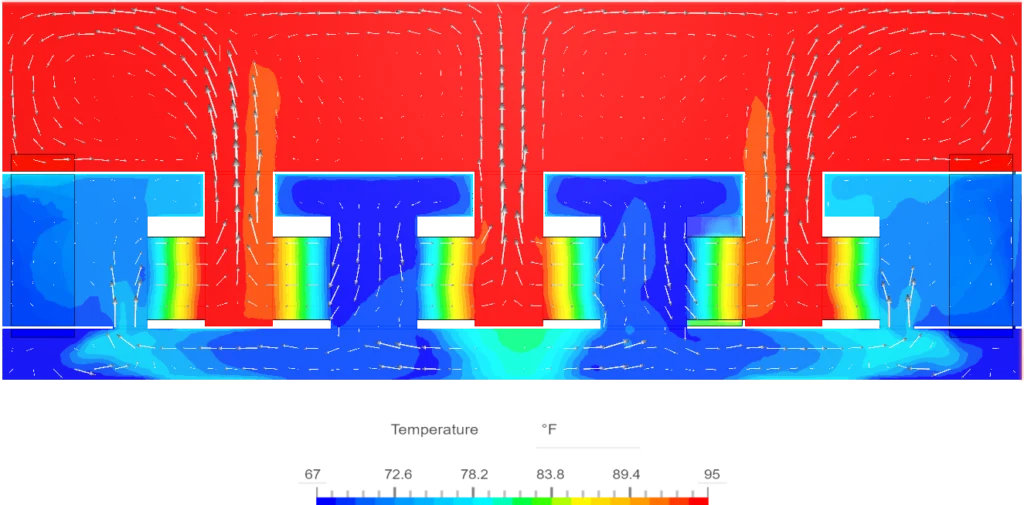
Design Management Group (DMG) is a pioneer in the architectural engineering industry, specializing in the design and optimization of buildings, particularly data centers. As the demands on data centers increase, particularly in terms of cooling and power efficiency, DMG has leveraged cutting-edge tools like SimScale to meet these challenges effectively. This case study explores how DMG uses SimScale to enhance its service offerings, focusing on computational fluid dynamics (CFD) to optimize the design and functionality of data centers.
DMG provides a broad range of engineering services with a focus on the data center market. The company integrates sophisticated engineering simulation from the pre-construction and planning stages to create efficient, reliable, and scalable infrastructure. A key aspect of their service involves the utilization of CFD to analyze and optimize air cooling systems and power distribution in data centers and other mission-critical buildings and services.
DMG utilizes CFD within SimScale to assess and enhance cooling efficiency. By analyzing airflow and heat transfer in data centers, DMG can:
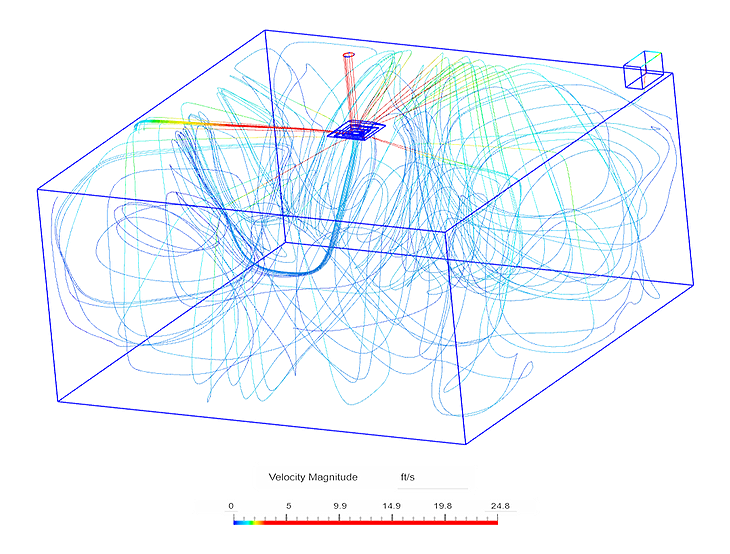
In the past, we have frequently outsourced computational fluid dynamics tasks to specialized companies. Due to cost constraints and project budgets, only a select few clients were willing to pay for the additional service. These clients were vastly associated with mission-critical facilities such as data centers and other environmentally controlled spaces. DMG made the decision to not only incorporate SimScale (CFD) into our in-house design workflow, but strive to make the service accessible for clients operating non-critical facilities, and fellow engineering firms alike.
Katie Bahnck
Design Engineer at DMG
Recently DMG undertook multiple high-density projects, most currently involving a 10,000-square-foot data center space. The primary challenge was to optimize the layout and cooling efficiency across a varied density of server racks’ layout. The simulation process involved:
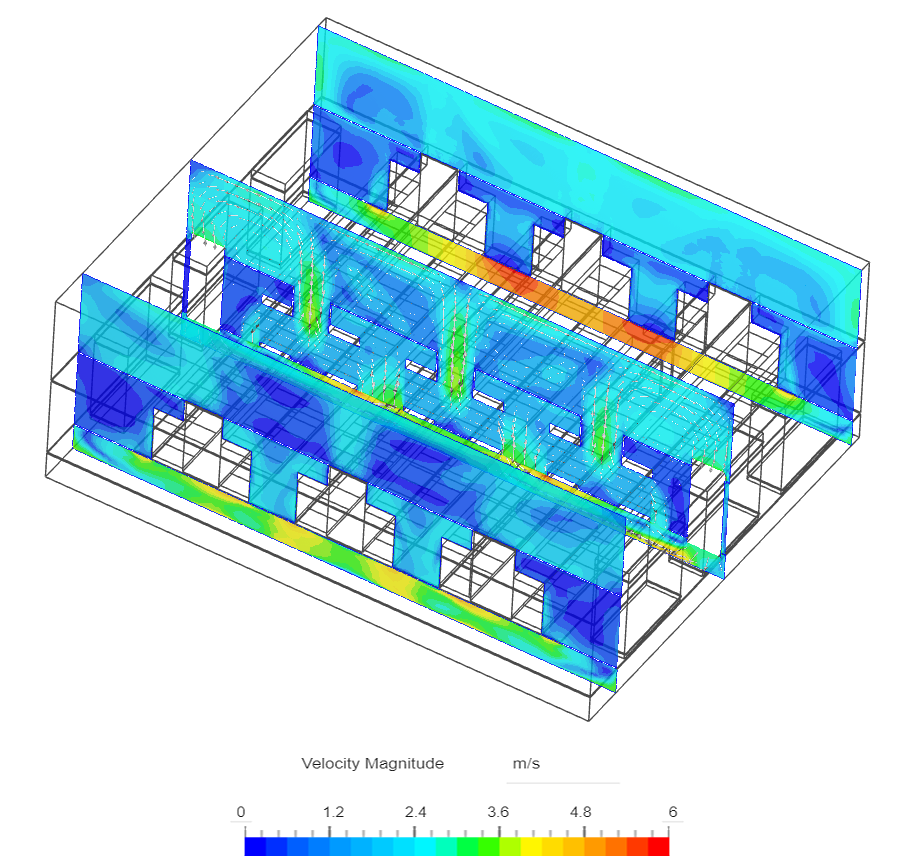
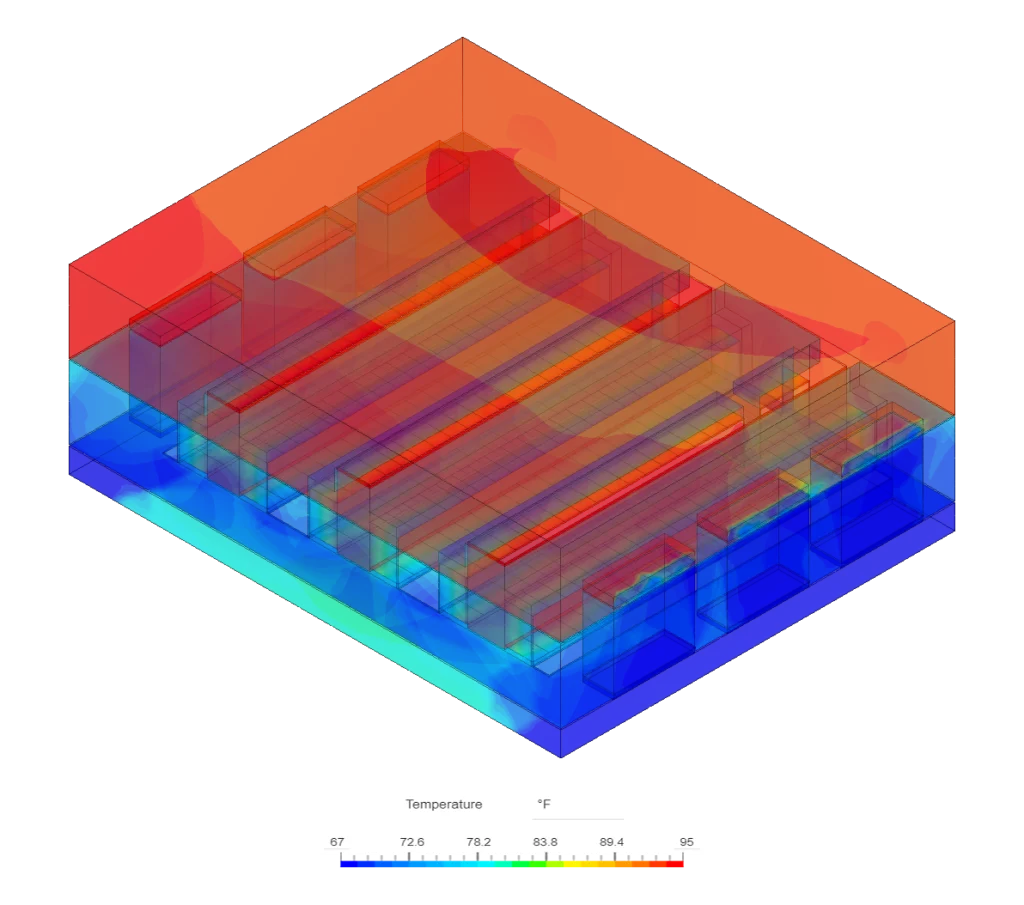
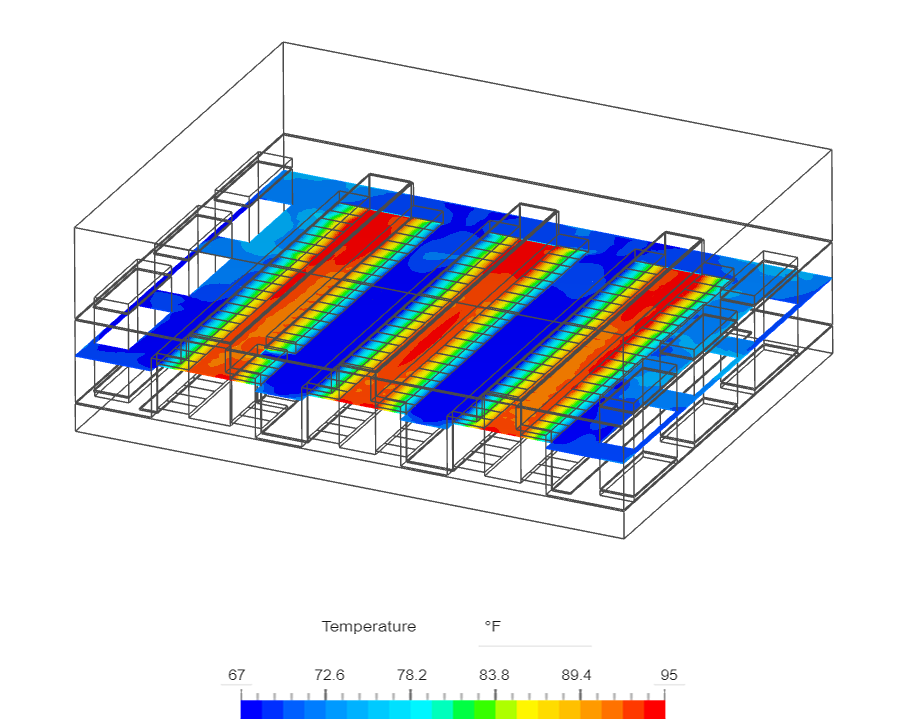

After much research, we have settled on utilizing SimScale software for in-house simulation services. SimScale is the only software developer to offer a totally web-based CFD solution with highly skilled technical staff on hand for real-time quality control and support.

Ryan J. Wanko
PE CEM LEED AP, Mechanical Engineer at DMG
DMG plans to expand its use of simulation to include external site analysis to prevent re-entrainment of exhaust flows and to further explore direct-to-chip and water-cooling designs. These next steps aim to push the boundaries of current data center cooling technologies, driving further efficiencies and innovations.
Design Management Group’s integration of SimScale into their engineering process has enhanced their approach to designing data centers. By leveraging detailed simulations from the planning phase, DMG not only optimizes building design but also ensures operational efficiency and sustainability. As DMG continues to explore new technologies and strategies, its commitment to innovation is significant given the changes that need constant adaptation to, including COVID-19, energy, and code compliance such as K12 for healthy indoor spaces in schools.
Being able to utilize a web-based software package significantly reduces computation time and increases productivity. This aspect, along with leveraging cloud services in lieu of on-premises infrastructure, results in cost savings that we pass to our clients

Ryan J Wanko
PE CEM LEED AP, Mechanical Engineer at DMG
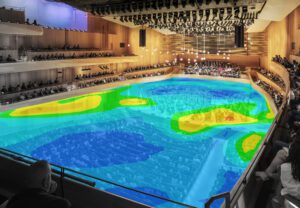
Sign up for SimScale
and start simulating now